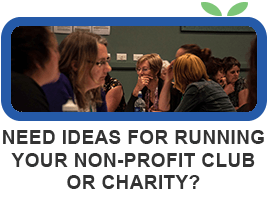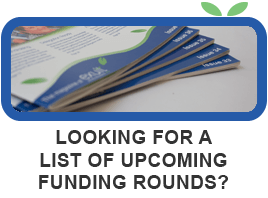Last updated February 1st, 2017
For decades organisations have run events as a way of raising money, but many events fall short of their fundraising potential because they are treated as isolated activities and not part of a bigger fundraising plan. To really make the most of your fundraising events you need to consider not just tickets sales and sponsorship, but how you can use your events to strengthen existing donor relationships. Fundraising events are also the perfect opportunity to tell your stories and encourage new donors to come on-board. Check out these five good ideas for boosting your event fundraising:
1. Sit Passionate Supporters at Every Table
If your event is a sit-down affair, make sure you seat passionate supporters at every table and ask if they would mind sharing stories of their involvement with those around them. Inspiration breeds inspiration, so as they share stories of why they got involved, it is likely that others will be inspired to get involved also. Make sure you give your supporters extra brochures and donation slips ahead of time, so that they have some to pass on if necessary.
2. Collect Contact Details
For many people, your fundraising event will be the first time they have had contact with your organisation. Don’t let it go to waste. Regardless of what type of event it is, make sure you have some way of gathering people’s contact details so you can keep in touch after they leave.
Depending on the event, you could have a registration desk, a lucky draw or simply a sign-up sheet to receive your newsletter. Be creative and remember if it’s a big event, you want people to be able to leave their details quickly. Once you have their details, make sure you follow up with a thank you and some sort of call to action within the week.
3. Tell Stories
Even (especially) if your fundraising event is unrelated to your cause, it’s important to remind people why they are there. Always open the event with a success story from one of your clients, and make the most of opportunities to tell more stories as the event progresses. Video stories are a great way to capture people’s attention.
4. Include Promotional Material in your Goody Bags
Goody bags are a great way to provide added value to your event audience, but while it’s nice to give your guests vouchers, samples and gifts – don’t forget to give them information about your own organisation and how they can help as well. So often goody bags are jam-packed with sponsor’s material, and organisations forget to promote their own cause. Don’t let this happen at your event.
Create a special event brochure which outlines who you are, what you do and why you do it. Include a success story from one of your clients or service users, and make sure you give the reader information about how they can make a donation. Don’t forget to provide your contact details, including your website and Facebook address, so that your potential supporter can stay in touch.
5. Ask for a Gift
Often organisations think that event fundraising is about how much money you make in ticket sales. Not the case. Yes, your ticket sales are an important part of generating funds, but more important is the opportunity to speak face-to-face with potential supporters and ask for a gift. Don’t let any event go by without asking people to deepen their commitment and make a donation. If they have already given financially, now is the time to ask if they would consider regular giving.
Make sure you ask more than once and in various ways. Do it from the front of the room and do it face-to-face. Most of all make it easy for people to contribute by having all the relevant forms and information available at the event.
Kerri Tilby-Price
Kerri is a Facilitator / Trainer with Exult and has over 20 years experience working in and for the community sector.
If you think this article would be useful for your members, you are welcome to use it on your website or in your newsletter. We just ask that you let us know where it is being used, and that you acknowledge our website at the bottom of the article. If you are using the article online, please include a link to our homepage.




